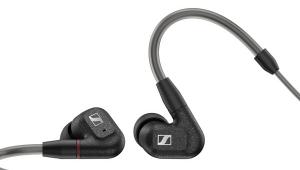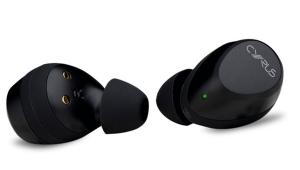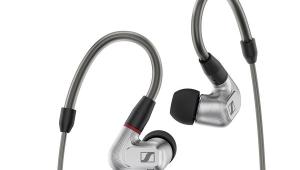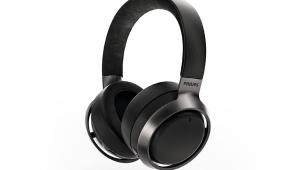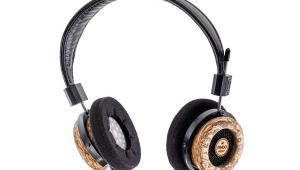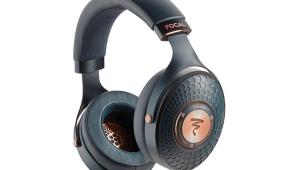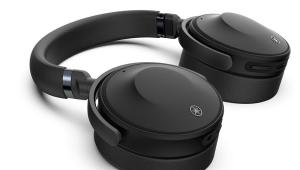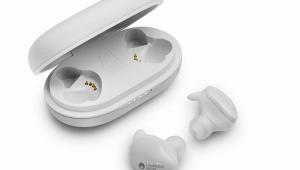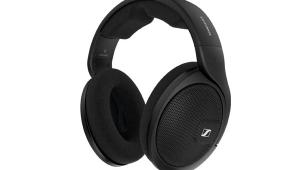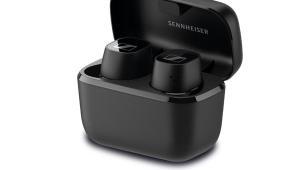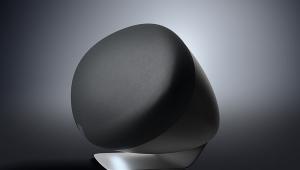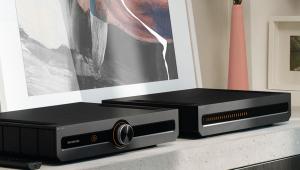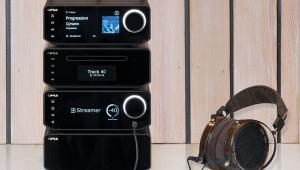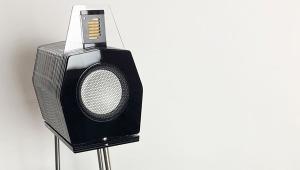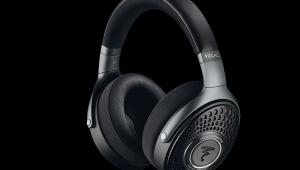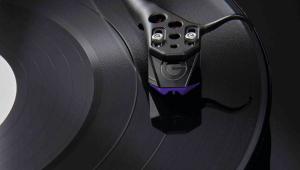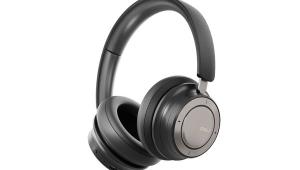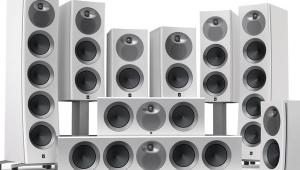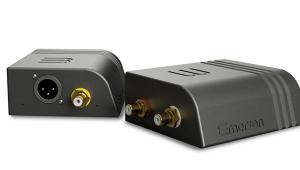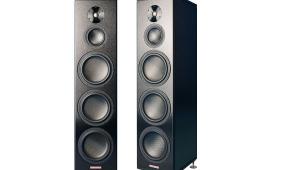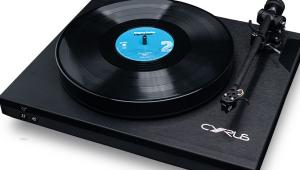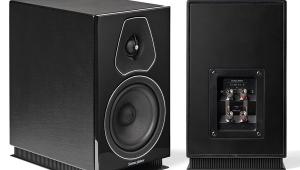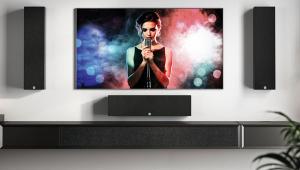Sonoma Acoustics M1

 There is something about a well-designed electrostatic headphone that conveys a sense of atmosphere, presence and intimacy without the feeling of the sound being closed in that can so often be the case with other headphone designs. I first saw the M1 at last year’s Hi-Fi Show Live in Windsor and was immediately impressed by the upmarket electrostatic design from Colorado-based company Sonoma Acoustics.
There is something about a well-designed electrostatic headphone that conveys a sense of atmosphere, presence and intimacy without the feeling of the sound being closed in that can so often be the case with other headphone designs. I first saw the M1 at last year’s Hi-Fi Show Live in Windsor and was immediately impressed by the upmarket electrostatic design from Colorado-based company Sonoma Acoustics.
More common dynamic designs employ a magnetically driven voice coil similar to conventional speaker drive units. With an electrostatic design, as employed here, the driving force is applied over most of the area of the diaphragm and so has more in common with planar magnetic headphones, which use magnetic attraction over most of the area of the diaphragm. The advantage of having the forces applied in this way is less potential distortion than with dynamic drivers where the forces are applied to a small area around the voice coil, which can cause flexing of the rest of the cone. The downside of planar magnetic headphones is that they require a heavier diaphragm and larger magnets than a dynamic driver. These are needed on both sides of the diaphragm, making them big and heavy. Electrostatic drive units are much lighter, but necessitate relatively high signal voltages to drive the diaphragm and also a high DC bias voltage to polarise the fixed elements, enabling the diaphragm to be attracted and repelled. This usually requires an energiser to step up the signal voltage and supply the DC bias voltage. The benefit is a lighter diaphragm and the potential for an extended frequency response, coupled with low distortion.
The energiser included with the Sonoma M1 can supply both the 1.35kV DC polarising voltage as well as the high-voltage signal that’s needed to drive the electrostatic elements in order to minimise the weight of the headphone. Furthermore, it also contains a DAC that supports PCM files of up to 32-bit/384kHz or up to DSD128 via a standard USB interface.
The energiser unit has two analogue inputs with different sensitivities – a line-level input via a pair of RCA sockets on the rear and what Sonoma calls a low-level input via a 3.5mm mini-jack socket for connecting personal music players. The rear panel has a switch for selecting either the line or low-level analogue input. There is also a 24VDC power input and an on/off switch. For the digital input, either a standard Type-B USB socket or an RCA coaxial digital input socket is used. The analogue or digital input is selected using a switch on the front panel where the volume control and headphone connection socket are also located. Incidentally, according to the manufacturer, the supplied switched-mode power supply is internally regulated by a fully isolated, ultra-low-noise linear regulator. The 2m headphone cable is detachable, which is also useful. The headphone employs High-Precision Electrostatic Laminate (HPEL) transducers, which are produced in the UK by Warwick Audio Technologies Ltd. with a sonic radiating area of 3,570 x 3,570mm.
Sound quality
Slipping the M1 over my ears gives me my first taste of its quality. This open-backed headphone is of the circumaural type, which is a fancy way of saying that it fits over and around the ears. The Cabretta top-grain Ethiopian sheepskin earpads are very comfortable indeed, although the headband is quite a tight fit over my head, even after adjustment. Having said that, it is quite light and I soon forget that I am wearing it, thanks to the comfort of the beautifully made leather earpads.
I first connect the M1 to my audio system via the line-level RCA input and kick off my listening tests with an LP of Vivaldi’s The Four Seasons played by the Academy Of Saint Martin-In-The-Fields and conducted by Neville Marriner. This LP was produced in 1970 from an analogue source right through to the mixing and final pressing. The exciting first movement of Winter is thrilling and the rendition is superbly full. The performance has great authority and power, which certainly isn’t constrained to the gap between my ears. Worthy of particular merit are the extended and very tuneful double basses and cellos during that movement; every note is clear and identifiable, even while the rest of the orchestra is letting rip. On the down side, during the quieter Largo of the second movement, I find that when I move my head, I hear a low-pitched rumble, which I trace back to the slightly stiff headphone cable rubbing on my shoulders when I turn my head. Further investigation when no music is playing reveals a touch of microphony when I tap the cable anywhere along its length. Although slight, it is a little disappointing for a headphone of this calibre, but is soon overlooked as I become engrossed in the scale of the performance.
Switching over to a CD source and some jazz, I spin a silver disc of the Jan Harbeck Quartet playing Cole Porter’s Too Darn Hot. The opening drum roll is spectacular, and I am drawn into this fast-paced piece right from the off. The saxophone and piano perform with great energy and excitement in the impromptu sections. In particular, the piano and drum solo segments sound really convincing, almost as if I am listening on loudspeakers in a room – quite a feat for a pair of cans.
To finish off my analogue listening session, I switch over to my Studer A810 professional open-reel tape machine and play a master tape copy of Haydn’s Cello Concerto No.1 in C major played by Enrico Dindo. A 15IPS master tape really is the best that analogue can offer and I am completely spellbound by the super-charged performance of Dindo. It takes a lot to get the hairs on the back of my neck to stand up, but this certainly happens during this piece, so lifelike is the performance.
The digital input is up for assessment next, so I swap the Sonoma M1 over to use my PC as the sound source to see how well the DAC performs. In order to connect the energiser to a Windows PC, it is necessary to install an XMOS USB driver, which can be downloaded from the Sonoma website. This is a straightforward job of running the installation program and then connecting the M1 energiser to the PC, which then recognises the unit as a USB audio device.
I start my digital listening with some jazz and a 16/44 file of Cécile McLorin Salvant singing Devil May Care from her album Dreams And Daggers. This is a live recording of McLorin singing in front of a small audience with an ensemble of piano, double bass and drums – all of which have plenty of solo spots during the performance. The soundstage is very believable and each instrument, as well as McLorin herself, has its own position in front of me. Once again, I am really taken with the sound of the double bass and drums. However, I’d say that the extreme top end of the hi-hat is ever so slightly constrained. Having said that, the balance of the piano, which is notoriously difficult to reproduce, is about as perfect as I could hope for.
A superb 16/96 WAV file of the California State University Fullerton Singers singing Eriks Esenvalds’ Amazing Grace is beautifully clear and unmuddled. I can almost identify each singer individually within the soundstage, which highlights the elegant sophistication of the M1.
For a complete change of musical genre, I turn to an Elton John MP3 of A Good Heart from his album Wonderful Crazy Night. The bass response is superb and well controlled, being tuneful and powerful. Elton’s vocals are rich and clear and positioned slightly to the left of centre with the drums to the right and the backing music filling the rest of the soundstage, which is impressive given the lo-res file format.
Conclusion
The M1 delivers a high-end musical performance with a fantastic bass response, which is very extended and tuneful. The slightly microphonic cable does rather let the overall performance down given the price. Across all the musical genres that I sample, the M1’s smooth and effortless top end and amazing bass qualities make it an engaging musical experience and one that’s particularly at home with rock and jazz music. NR
DETAILS
Product: Sonoma Acoustics M1
Price: £4,995
Origin: US/UK
Type: Open-back, circumaural headphone
Weight: 2.5kg (Energiser), 303g (Headphone without cable)
Dimensions: (WxHxD) 190 x 57 x 290mm (Energiser)
FEATURES
● 32-bit/384kHz-capable DAC with DSD128 support
● Inputs: 1x RCA; 1x 3.5mm mini-jack; coaxial digital; USB-B port
● 2m cable
Distributor: Sonoma Acoustics Ltd.
Telephone: 07720 555754
Website: sonomaacoustics.com
Read the full review in July issue 438
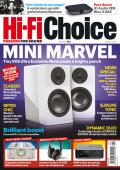 |
Inside this month's issue:
WiiM Ultra, System Audio Signature 5, Monitor Audio Studio 89, Volumio Rivo, SVS Ultra Evolution Nano, iFi Audio ZEN Blue 3 and much, much more
|

